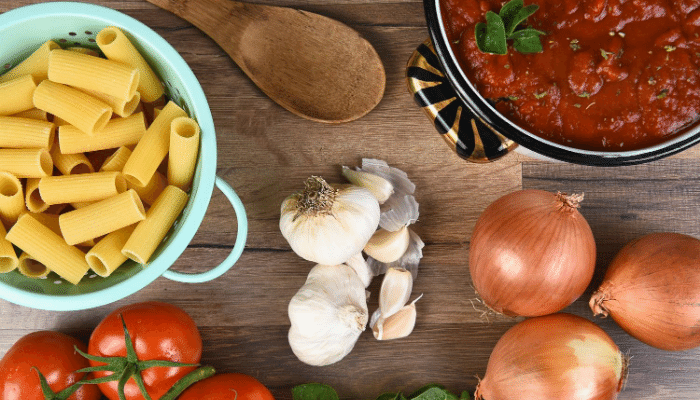Italian culture is deeply rooted in the arts, family, architecture, music, and especially, the food. Italians enjoy relishing the savory flavors of all of their culinary traditions such as freshly picked vine tomatoes, delicious figs from Nonno’s fig tree, handmade pasta, perfectly cured meats, mouthwatering mozzarella, and strong shots of Italian coffee.
Italian food customs are many and they vary throughout the peninsula but there is consensus over some rules of Italian food culture.
These are some of the Italian food culture rules accepted all over our country.
Meal Times
Timing of meals is crucial. Lunch is served at 1.00 PM and dinner at 8.00 PM. In northern Italy it can be a little earlier and a little later towards the south but don’t dream of eating at 4.00, the restaurant kitchens are closed until dinner time.

Italian Food Menu
A complete menu is composed of an “antipasto, primo, secondo, contorno, and the dolce”. Nobody is capable of such a feat on an ordinary day. Most meals are composed of two courses, a “primo” (pasta or rice) and/or a “secondo” (meat or fish) and a “contorno” (side dish).
Not every meal contains all five courses, but many do. If you want the full, five-course Italian dinner, here are the parts you need:
The antipasto: A traditional Italian meal starts with something to nibble on, called an antipasto, which translates into English as “before the meal.”
The primo: In Italy, pasta is a first course, or primo, served as an appetizer, not as the main event. Soup, rice, and polenta are the other options for the primo.
The secondo: The main course is called il secondo, or the second course. Chicken, meat, or fish are the usual choices, and portions are generally small. These main courses are usually fairly simple, especially if a rich pasta or rice dish precedes them.
The contorno: A platter of vegetables usually accompanies the main course. This side dish highlights the simple goodness of the vegetable. The word contorno loosely translates as “contours” and refers to the fact that the vegetable course helps shape and define the meal.
The dolce: A dolce (or sweet) ends a traditional Italian meal.
Never in the Same Plate
Every dish is served in a different plate, mixing is strongly discouraged.
Salad
Salad is considered a side dish and, even if you order it as a starter, your request will be probably ignored. Seasonal greens can be dressed in something simple and accommodating for everyone, or served with a dressing and cruets of oil and vinegar. Salt an pepper, always.
Fruit and Cheese
Meals are generally closed with fresh fruits, often cheeses and coffee. Fruit and cheese, something for everyone.
An entire course is dedicated to local cheeses and fresh seasonal fruit. The cheeses will be whatever is typical of the region.
Coffee
Coffee is often drunk at the end of a meal, even after the digestivo. Italians, unlike many countries, do not have milky coffees or drinks after meals (such as cappuccino or caffè macchiato), but strong coffee such as espresso, which is often drunk very quickly in small cups at very high temperatures.
If you can’t resist the impulse of ruining a good meal with milk, ask for a “caffe’ macchiato”, coffee with just a drop of milk. It is considered an acceptable alternative to cappuccino.
The digestivo, also called ammazzacaffè if served after the coffee, is the drink to conclude the meal. Drinks such as grappa, amaro, limoncello or other fruit/herbal drinks are drunk.
Drinking Milk
Drinking milk at lunch or dinner is simply unheard of, it will kill the flavor of whatever you are eating and the relationship with the waiter.
Drinks
Acceptable drinks during a meal are red or white wine, mineral water, beer and, for the kids—sodas.

No Cheese on Seafood
Never sprinkle or grate cheese on seafood or fish. The strong cheese flavor would murder the seafood aroma. Try it only at your own risk, most restaurants will decline any responsibility over the results.
Soffritto
Most of the best Italian dishes start with a “soffritto.” It is generally made with onion, carrot and celery, finely cut and lightly fried in a little olive oil.
Discover authentic Italy with http://www.le-marche-travel-guide.com/
The author of this article was born and raised in the Italian region of Le Marche. In her site you will find insider tips on the attractions, typical food and wines of this beautiful and still undiscovered Italian area.

Fantastic post about Italian foods customs and traditions. Italian foods are very delicious. I used to go in Italian restaurants in Niagara Falls every weekend. Very well written post and very informative. I have enjoyed a lot while reading the post.Thanks a lot for sharing such interesting post with us.
Thanks for finally talking about >Italian
Food Customs and Traditions <Liked it!